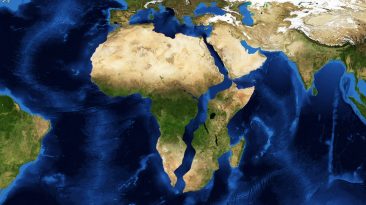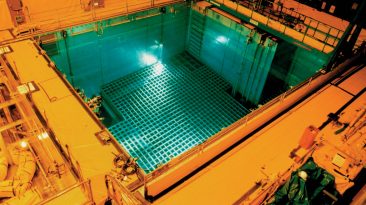Could we move to our new moon one day? Or is this one of those scenarios where everybody dies in the end?
“Fly me to Mars..” Ahem, where were we? Right, Mars in the sky. For the sake of our little thought experiment, let’s not include the Moon in the equation. Let’s just assume that Mars has replaced it altogether.
Mars is about double the size of the Moon. For us down here on Earth, it would appear twice as big. What a fantastic view. But what would come with it?
Tsunamis? Earthquakes? One big planetary collision?
If Mars were to become our only natural satellite, things in this part of the Solar System would change. For Mars, taking the place of the Moon would mean temperatures on the red planet would rise from their current average of -60°C (-80°F).
Its polar ice cap would melt. Chances are, this would reveal water hiding underneath and make Mars a very attractive place for colonization. Hold that thought, we’ll come back to this later.
While the Moon reflects its bright white and blue sheen onto the Earth, Mars would be even more vibrant to look at. And because of its larger surface area, it would reflect more sunlight at night, making our evening hours about four times brighter, and casting an orange hue across our planet. But these wouldn’t be the only changes for the Earth.
It’s the Moon’s gravity tugging at the Earth that causes our ocean tides. Mars, being so much bigger, would have a stronger gravitational pull on us. With Mars standing in for the Moon, we’d see an increase in volcanic activity and the shifting of the tectonic plates.
Tsunamis may occur more often and be stronger than ever before. Temperatures on Earth would jump, causing some of the polar ice to melt — leading to higher tides and bigger tsunamis.
You’d want to strive to make it through the wave of tsunamis and volcanic eruptions. Because the opportunities that come after that would be mind-blowing.
Think of it. Mars is now a mere 385,000 km (238,855 miles) away from us. It would take you less time to get there than it takes to fly from North America to Australia with stopovers.
With all the potential for humans to terraform and live on Mars, it would be inevitable that we would turn it into our second home. Realistically, we could start populating it just eight years after the red planet became our new moon.
The question is whether or not the colonization of Mars would turn into a new version of the Cold War. A space race with the most powerful countries in the world doing whatever they could to become the first to set up a civilization on Mars.
But let’s go back down to Earth. Mars is way further than we would want. We are working towards sending people to the red planet. But it wouldn’t be until 100 years from now that Mars would see a population of one million humans.
Subscribe to What-If on Youtube or follow the show on Facebook Watch.
Sources
- “If Mars Became A Moon Of Earth”. 2019. Youtube. Accessed May 23 2019.
- “What Is The Temperature Of Mars?”. Sharp, Tim. 2017. space.com. Accessed May 23 2019.
- “Here’s All The Past, Present, And Future Missions To Mars | Digital Trends”. 2019. Digital Trends. Accessed May 23 2019.
- “What Is A Barycenter? | NASA Space Place – NASA Science For Kids”. 2019. spaceplace.nasa.gov. Accessed May 23 2019.



























